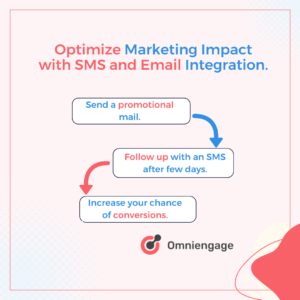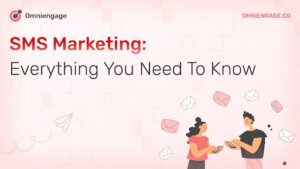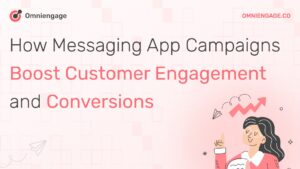When it comes to marketing, sometimes one channel isn’t always enough to reach your target audience effectively. In this blog post, you’ll learn how to combine two popular marketing strategies: SMS marketing and email. Then you can amplify and maximize the impact from both channels. Then you can reach potential buyers faster and further! So settle in because this blog post will explain why combining SMS and email packs a powerful punch for businesses!
SMS and Email Marketing: The Preferred Channels for Marketers
If you’re considering ways to reach out to your customers, SMS and email marketing are two methods to consider. While they offer advantages, each has a unique difference that sets it apart regarding communication. For example, SMS marketing can be great for quick promotions and confirmations. On the other hand, email marketing can allow for more personalized offers and shipping updates.
Additionally, the email open rates are typically higher for B2B companies than for SMS. So consider this when choosing the right marketing strategy for your organization. Overall, SMS and email marketing can be effective ways to connect with your audience. So evaluating your specific business goals is important to decide which fits you best.
Combining SMS and Email – Using Both Channels Together Is Better Than Just One
One way to boost engagement is by combining SMS and email. By doing so, you can reach a wider audience, increase customer lifetime value, and better reach the target audience with proper segmentation. Plus, SMS and email each have their own unique strengths.
SMS messages are immediate and personal, while email provides a more detailed visual experience. So why not use both to create an extensive and effective communication strategy?
How to Synergize SMS and Email Marketing?
Segment Your Audience
Audience segmentation is key in utilizing the strengths of both platforms. Consider the differences in message delivery between SMS and email. While SMS often has a higher open rate, emails can provide space for more in-depth and compelling content.

Align the Timing and Frequency of Messages
Carefully considering when and how often you connect with customers across these two channels is important. Brands should aim to strike the right balance that avoids inundating customers while still actively engaging them. By coordinating timing and frequency across SMS and email channels, brands can deliver relevant messaging when customers are most likely to respond. For example, sending an email newsletter on a topic and then a follow-up SMS reminder a day later can remind customers of essential information without being intrusive.
Schedule cross-channel communications in a complementary way that feels natural to how a customer interacts with the brand. This thoughtful approach to timing and frequency demonstrates respect for the customer’s time. It also reduces the risk of sending conflicting messages in different channels that could confuse or frustrate customers. When done consistently over time, this omnichannel coordination can lead to meaningful ongoing conversations that fuel loyalty and satisfaction.
Optimize the Content for Quality
Content drives conversion, ultimately. Ensure that you are providing valuable information that is worth their attention.
In conclusion, when using SMS and email marketing together, it’s essential to carefully segment your audience, schedule your messages appropriately, and focus on content that resonates with your audience.
Tools and Platforms for SMS and Email Integration
Integrating multiple systems can feel daunting, but luckily there are tools and platforms to make it easier. One example is OmniEngage, which offers a variety of features to help streamline the integration process.
Other tools and platforms for integration may include software like Zapier, which connects various apps and automates tasks between them, or middleware platforms like MuleSoft, which allow you to connect different systems and data sources seamlessly. Whether you’re a developer or a business owner, having the right tools and platforms for integration is essential to staying competitive and reaching your goals.
SMS and Email Marketing Combined: Examples
When used together, SMS and email marketing are effective but can create an unstoppable marketing force. One example campaign that uses both channels is a welcome series. When someone signs up for your email list, you can send a welcome email with a text message thanking them for signing up. This will encourage them to check their inbox for more information.
Another example is utilizing SMS as a follow-up to an email campaign. If you send an email promoting a sale, you can send an SMS reminder a few days later. This encourages those who haven’t made a purchase yet. By using SMS and email together, you can increase your chances of reaching your audience and driving conversions.
Conclusion
In conclusion, brands should strategically combine SMS and email channels as part of effective omnichannel marketing. While each channel has strengths on its own, coordinating messaging across SMS and email provides synergies that amplify campaign reach and engagement. SMS offers real-time push notifications to grab attention on mobile devices instantly. Yet SMS message length is limited, making email ideal for long-form storytelling with images and links. Together, timely SMS alerts can direct audiences to rich email content with calls-to-action.
Carefully target customer segments, coordinate timing and frequency between connected SMS and email efforts, maintain consistent branding and tone across channels, and analyze performance using attribution modeling. With proper planning and execution, integrated SMS and email drive higher campaign response rates and return on marketing investment. Ultimately, weaving these quintessential channels together as part of a broader omnichannel strategy cultivates fruitful customer relationships and loyalty over the long term.






